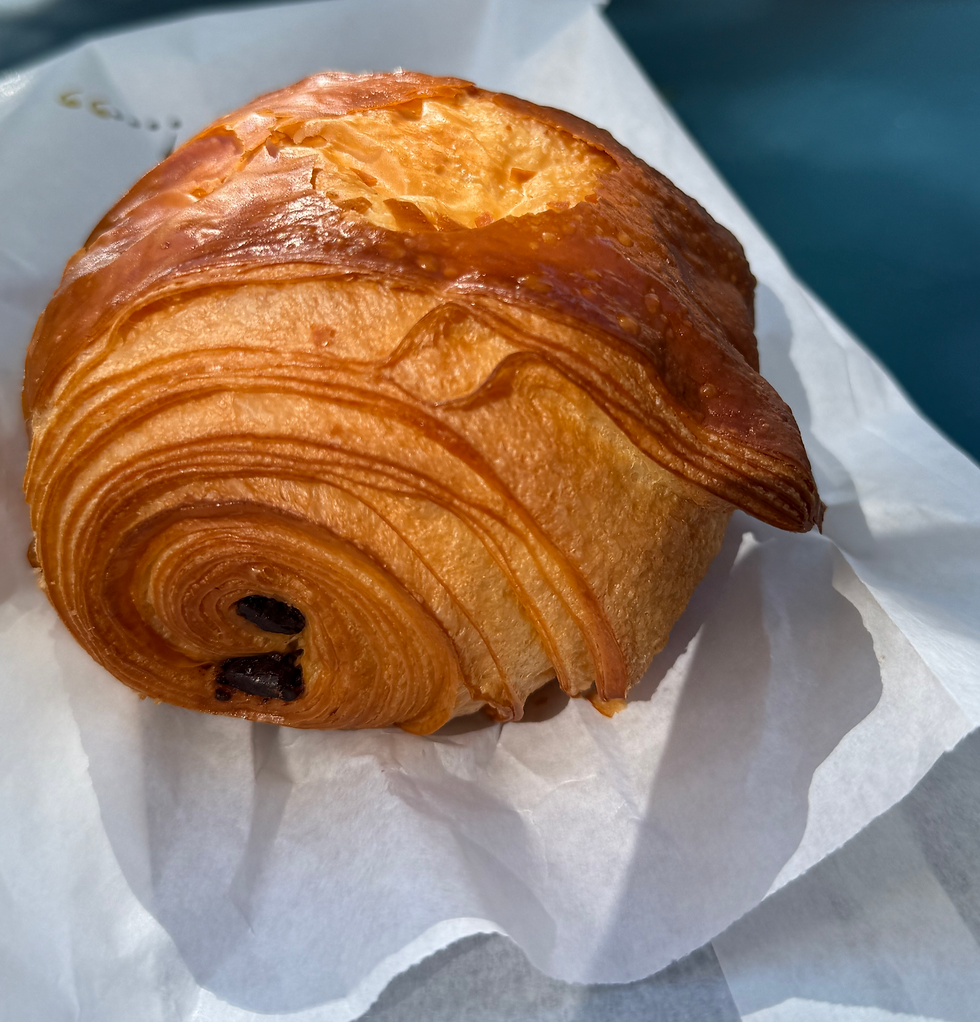Interlaken to Zweisimmen to Monbovon to Gruyerès to Bulle to Broc Fabrique to Bulle to Bern to Inter
- Deborah Kade
- Dec 26, 2018
- 3 min read
Updated: Oct 13, 2019
Michael and I were on many trains today.
The trains in Switzerland run like Swiss clockwork. On time!!!! The reason for so many connections- we wanted to go to Gruyères for lunch and then to Cailler to buy more chocolate. We had purchased 160 chocolate bars when we were here in September and we are now down to 12 or 14.
We took the GoldenPass Panoramic train from Interlaken Ost to Monbovon with a switch of trains in Zweisimmen. The trains are ultra modern. In addition to being very comfortable, they are fitted with panoramic windows. Thanks to these windows, you can immerse yourself in the nature outside.
The mountain tops had snow while there was only frost covering the ground at the lower elevations.

Sun shining on this side of the mountain.

Sun not shining on this side.

Mixture of snow and frost on the ground.

The ski lifts go over the train tracks.


The panoramic windows. Most of the people were talking and not looking outside at the breathtaking scenery. Really??!!


Trees were so pretty covered in frost

Parking lot is filling up. Just go in the tunnel under the train tracks and you can get on the lifts.


The area between Saanen and Gstaad
Saanen is one of the most beautiful chalet villages in the Berner Oberland







Gstaad
Gstaad is a world renowned sophisticated traffic free chalet village. The village has high end hotels, restaurants and shops. There is a glacier ski area only 15 minutes away. They have their own airport for small planes or small jets.








In the summer, they have beautiful flowers growing in the boxes.



Gruyères
Gruyères is a medieval town. It's known for the production of the cheese of the same name.

Frost covered trees












Many tourists!


Gruyères is in the French speaking section of Switzerland as you can tell from the name of the hotel.


Michael and I always eat raclette at the Hotel de Ville.
Raclette is a semi-hard cheese that is usually fashioned into a wheel of about 6 kg (13 lb). The Alpine cow milk based dairy product is most commonly used for melting, but is also consumed as a slice. Raclette is a Savoyard (French) as well as Swiss dish based on heating the cheese and scraping off (from French: racler) the melted part.
Raclette was mentioned in medieval texts from Swiss-German convents dating from as early as 1291. The cheese was originally consumed by peasants in the mountainous Alpine regions of Valais (Switzerland), Savoie and Haute-Savoie (France). It was then known in the German-speaking part of Switzerland as Bratchäs, or "roasted cheese". Traditionally, cow herders carried cheese with them when they were moving cows to or from pastures up in the mountains. In the evening, the cheese would be placed next to a campfire for softening, then scraped onto bread.

It is accompanied by small firm potatoes (Bintje, Charlotte or Raclette varieties), cornichons (gherkins), pickled onions and often dried meat.

In Switzerland, raclette is typically served with tea, other warm beverages, or Fendant wine. A French popular option is to serve it with white wine, such as the traditional Savoy wine, but Riesling and pinot gris are also common. Local tradition cautions that other drinks – water, for example – will cause the cheese to harden in the stomach, leading to indigestion.

After lunch, we were off to Cailler.




Patrick was preparing for a children's class. Patrick has been our instructor when we have taken classes in past years.


Many people visiting Cailler today.


Cailler and Kambly. My two favorites! A marriage made in heaven. How can you go wrong when you put Cailler chocolate on a Kambly biscuit?

Fog from Bulle to Bern. It was too dark to take pictures from Bern to Interlaken.






Comments